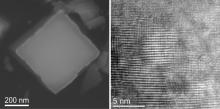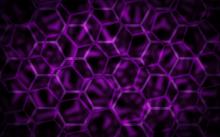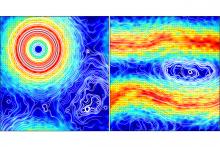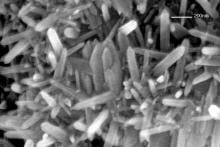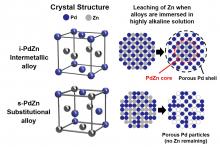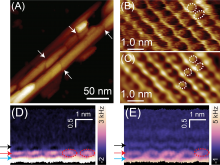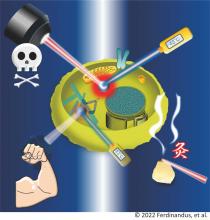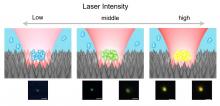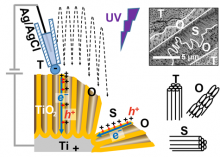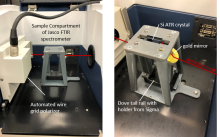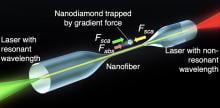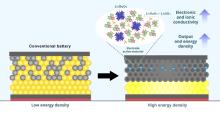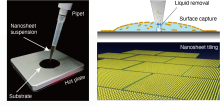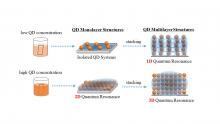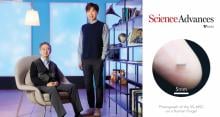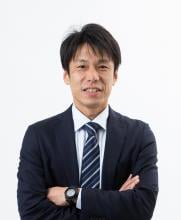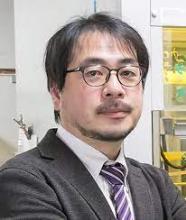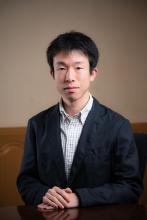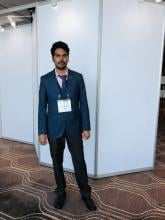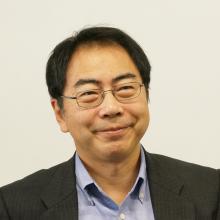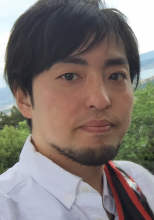Materials Science and Engineering Nanomaterials
News
06 Aug 2023
A team of researchers from Singapore and the UK, led by Dr Wei Liang Lai, with supervisor, Associate Professor Kheng Lim Goh, has developed a portable device for repairing hard-to-see damage in carbon fiber materials. The device has great potential for the aerospace industry, such as to repair the fuselage of commercial aircraft.
03 Mar 2023
An international collaboration is developing coating materials that could make windows better insulators.
28 Feb 2023
2.5-dimensional materials promise new applications for artificial intelligence, electronics, automobiles and the energy sector.
20 Jan 2023
Overeating mechanism: why "eating just one chip"🍟 is impossible, Measuring hidden energy of gamma-ray bursts, Marine species that can adapt to ocean acidification & A rough start can lead to a strong bond, Read all in our first Editor's Choice of 2023. Plus our interview on what dengue vaccine approval in EU💉means for global dengue protection.
05 Jan 2023
Researchers at The University of Tokyo simulate the phase separation of self-spinning particles, and show that the process differs from other unmixing processes, which may shed light on the organization of bacteria and other organisms
13 Dec 2022
Researchers at The University of Tokyo develop a simple but effective method of bonding polymers with galvanized steel, a material ubiquitous in the automobile industry, to cheaply and easily create a lightweight and durable product.
18 Oct 2022
Osaka Metropolitan University researchers have created intermetallic alloy nanoparticles of palladium and zinc with an alternating arrangement of zinc and palladium atoms. The intermetallic alloy is more corrosion-resistant than substitutional alloys while retaining the electrocatalytic properties of both metals, which could be useful for developing new non-precious metal electrocatalysts.
17 Oct 2022
Chemists in Japan, Canada and Europe have uncovered flaws in the surface structure of cellulose nanocrystals—an important step toward deconstructing cellulose to produce renewable nano-materials relevant to biochemical products, energy solutions, and biofuels.
29 Aug 2022
Tohoku University scientists in Japan have developed a mathematical description of what happens within tiny magnets as they fluctuate between states when an electric current and magnetic field are applied. Their findings, published in the journal Nature Communications, could act as the foundation for engineering more advanced computers that can quantify uncertainty while interpreting complex data.
08 Aug 2022
Researchers at Kanazawa University report in ACS Nano the development of a nanoparticle that acts as a heater and a thermometer. Inserting the nanoparticle in living cells results in a heat spot that, by switching it on and off, enables the controlled modulation of local cellular activities.
11 Apr 2022
Milling rice to separate the grain from the husks, produces about 100 million tons of rice husk waste globally each year. Scientists searching for a scalable method to fabricate quantum dots have developed a way to recycle rice husks to create the first silicon quantum dot LED light. Their new method transforms agricultural waste into state-of-the-art light-emitting diodes in a low-cost, environmentally friendly way.
02 Mar 2022
A nanoparticle’s size is fine-tuned to offer high-resolution images before and during surgical procedures.
28 Feb 2022
Scientists demonstrate an optical trapping technique using nanotextured black silicon that can efficiently trap polymer chains. By adjusting the laser intensity, these “optical tweezers” can control the florescence color emitted through a local concentration of a perylene-modified polymer solution. From a low intensity blue to high intensity orange, this reversible and fully remote technology can almost reach the entire RGB spectrum.
17 Feb 2022
In a recent study published in the journal ACS Catalysis researchers from Kanazawa University describe novel scanning electrochemical cell microscopy measurements to determine sites of photoelectrochemical activity in titanium dioxide nanotubes.
14 Sep 2021
Researchers at Jilin University, China, reviewed recent progress in the study of Salvinia leaves and their artificial replicas.
01 Sep 2021
Scientists from South Korea add foreign atoms to monolayer graphene in a controlled manner to selectively enhance its desirable properties
05 Jul 2021
Osaka Prefecture University develops a method to design and control the path of electron flow in a polycrystalline material. Using epitaxial growth approach, researchers address the electrical conductivity problem of thin film materials by realizing a highly conductive in-plane orientation of a metal-organic framework. Furthermore, they show that it is possible to fabricate oriented thin film patterns by integration with UV lithography technology.
17 Jun 2021
Researchers at Osaka Prefecture University have established an approach to identify the orientation of molecules and chemical bonds in crystalline organic-inorganic hybrid thin films deposited on substrates using Fourier transform infrared spectroscopy (FT-IR) and polarized infrared light with a 3D-printed attenuated total reflectance (ATR) unit. This inexpensive method with laboratory-grade equipment quickly reaches the crystal-structure model of even extremely thin films of less than 10 nm.
12 May 2021
Heusler alloys are promising contenders for faster and more energy-efficient computing and memory storage devices.
12 May 2021
An artificial intelligence approach extracts how an aluminium alloy’s contents and manufacturing are related to specific mechanical properties.
26 Mar 2021
Scientists have developed a method to use lasers to control the movement of nanodiamonds with fluorescent centers.
10 Mar 2021
A nanoparticle’s size is fine-tuned to offer high-resolution images before and during surgical procedures.
09 Mar 2021
The fine structure of barium titanite, a potential alternative to lead titanite, has been revealed by researchers employing a novel technique over the extremely short time period that the ferroelectric phenomena experienced by these materials occur. The investigation should assist further exploration of how to replace lead titanate with other materials, so that its widespread applicability may be enjoyed while avoiding its role in lead pollution.
18 Feb 2021
Lithium ion batteries use liquid electrolytes that have several drawbacks, which can be overcome by all-solid-state lithium secondary batteries (ASSBs). However, it is important to find efficient electrode materials for ASSBs. A research team from Japan has recently developed a novel electrode material for ASSBs by combining lithium sulfate and lithium ruthenate, which results in improved performance. The scientists hope that their novel approach will guide future research and the eventual commercialization of such high-capacity batteries.
03 Feb 2021
A surprisingly simple method improves ‘drop casting’ fabrication of tiled nanosheets that could be used in next-generation electronic devices. All you need is a pipette and a hotplate.
19 Nov 2020
Scientists have found a way to control an interaction between quantum dots that could lead to more efficient solar cells.
03 Nov 2020
A recent study, affiliated with South Korea's Ulsan National Institute of Science and Technology (UNIST) has synthesized a film composed of densely packed diamond-like carbon nanofibers. l Image Credit: Kyoungchae Kim
03 Nov 2020
A recent study, affiliated with South Korea's Ulsan National Institute of Science and Technology (UNIST) has developed a tiny micro supercapacitor (MSC), being small as the width of a person's fingerprint.
13 Oct 2020
The trick to extremely thin supercapacitors with improved performance is spraying graphene ink at an angle.
Events

South Korea's Ulsan National Institute of Science and Technology (UNIST), jointly with Ulsan Metropolitan City, held the "Graphene Symposium in Ulsan" on Wednesday, May 8, 2019.
Researchers
Dr Fabien Grasset is a Research Director at the Centre national de la recherche scientifique (CNRS) and currently serving as Director of Research for Rennes Institute of Chemical Sciences (ISCR). His areas of expertise include materials chemistry, solid-state chemistry, nanotechnology, nanoparticles, optical coatings and thin films.
Dr. Hiroki Ago is a Distinguished Professor of the Global Innovation Center at Kyushu University. His research focuses on nanomaterials, particularly graphene and related 2D materials, and their applications.
Prof. Hiroshi Yabu is a Professor and Principal Investigator at the Advanced Institute for Materials Research (WPI-AIMR) at Tohoku University. His research interests include self-organization, biomimetics, and bio-inspired materials for energy and low environmental impacts.
Dr. Zong-Hong Lin is a Professor at the Institute of Biomedical Engineering, National Tsing Hua University and at the Department of Biomedical Engineering, National Taiwan University.
Robert E Simpson is an Associate Professor at the Singapore University of Technology and Design (SUTD). Rob’s research interests are focused on designing new materials for applications in electronics, photonics, data storage, and biosensing.
Ridha is a Senior Lecturer in the Department of Mechanical Engineering and is jointly an associate member of Advanced Manufacturing and Materials Processing (AMMP) Center at the University of Malaya.
Satoshi Ishii is a principal researcher at International Center for Materials Nanoarchitectonics (MANA), National Institute for Materials Science (NIMS), Japan. He also holds an adjunct associate professorship at University of Tsukuba.
Dr Teng Yin Ting is a Lecturer in Republic Polytechnic, Singapore, with more than 10 years of research experience in chemical additives, nanomaterials, battery materials and energy harvesting materials.
Ordered Functional Materials, like, COFs, COPs, CTFs for membrane applications (soft actuators and energy storage & conversion)
Dr. Zhifeng Huang is a professor at Hong Kong Baptist University, and associate director of nanomaterials at HKBU's Golden Meditech Centre for NeuroRegeneration Sciences. He co-founded Mat-A-Cell Ltd.
Current: Deputy and Administrative Director & Principal Investigator of International Center for Materials Nanoarchitectonics (WPI-MANA) .
Professor at the Graduate School of Pure and Applied Sciences, University of Tsukuba
Dr. Omachi is Associate Professor, Research Center for Materials Science, Nagoya University
Prof. Oh is the director of the Creative Research Initiative Center for Functionally Antagonistic Nano-Engineering, and the director of the Active Materials and Dynamic Systems Lab at KAIST.
Giants in history
Sorry, nothing coming up for this discipline


